Master Cylinder Replacement LHD
Removal Procedure
Warning: Refer to Brake Fluid Irritant Warning in the Preface section.
Caution: Refer to Brake Fluid Effects on Paint and Electrical Components Caution in the Preface section.
- With the engine OFF, apply and release the brake pedal several times until the pedal becomes firm to deplete the power vacuum brake booster vacuum reserve.
- Disconnect the brake fluid level indicator switch electrical connector.
- Remove the air inlet panel support bracket push nut from the master cylinder mounting stud.
- Carefully pull the air inlet panel support bracket outward and rotate the panel aside.
- Disconnect the master cylinder primary brake pipe fitting (1).
- Disconnect the master cylinder secondary brake pipe fitting (1).
- Remove the master cylinder nuts (1).
- Remove the master cylinder (1) from the power vacuum brake booster.
- Inspect the master cylinder to power vacuum brake booster seal for damage and replace, if necessary.
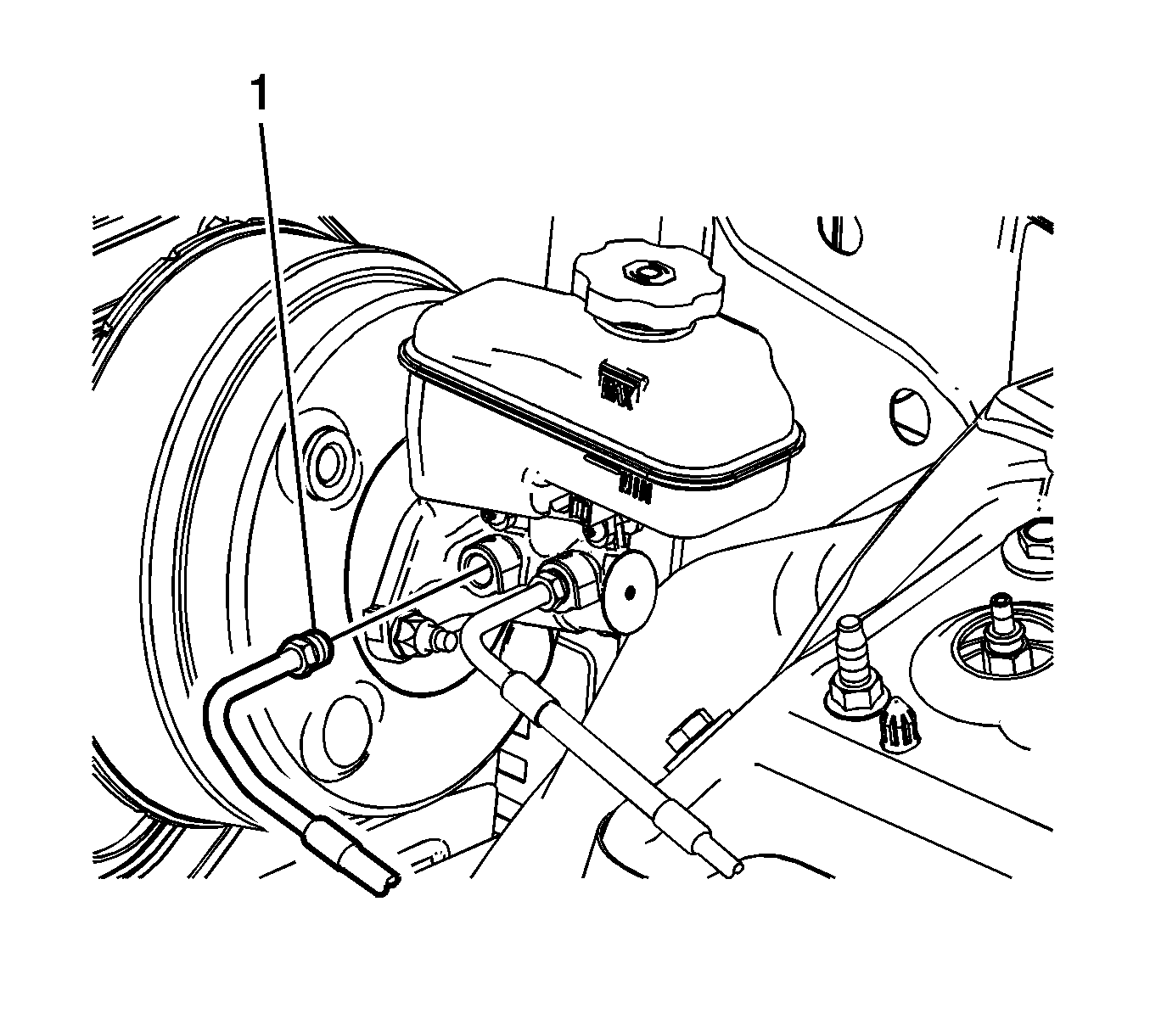
Cap the brake pipe fitting and plug the master cylinder outlet port to prevent brake fluid loss and contamination.

Cap the brake pipe fitting and plug the master cylinder outlet port to prevent brake fluid loss and contamination.
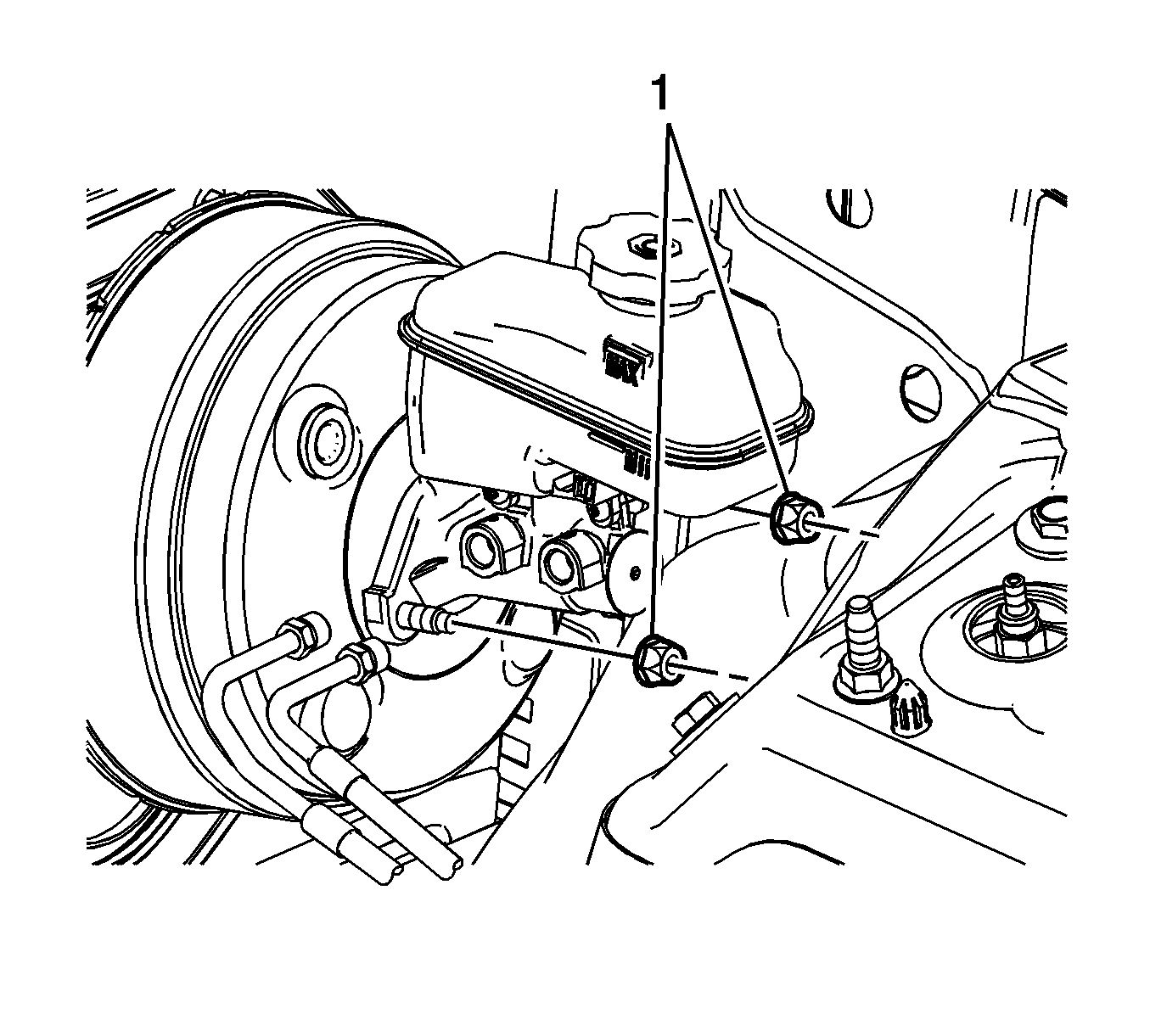
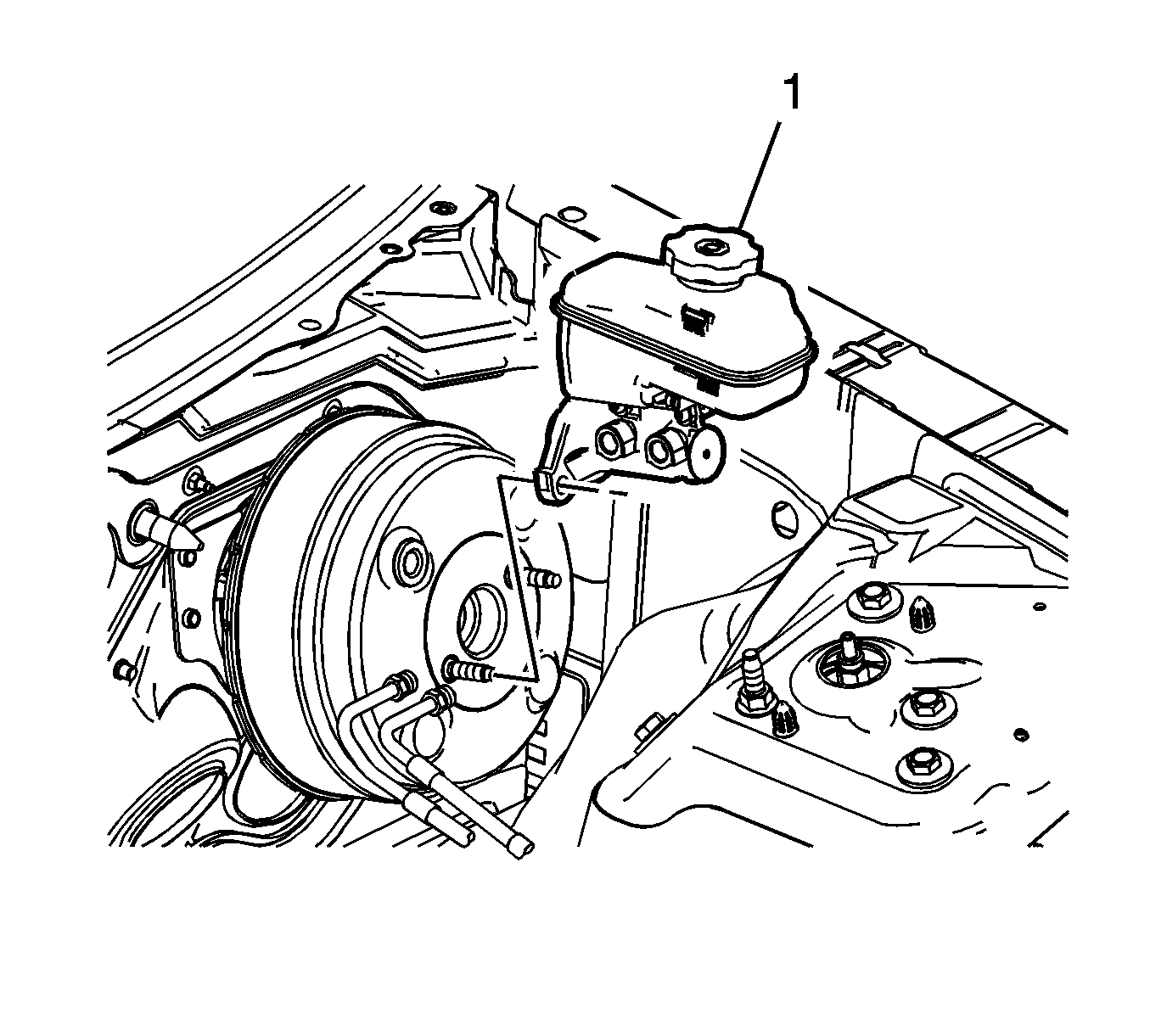
Installation Procedure
- Position the master cylinder to power vacuum brake booster seal to the groove in the master cylinder body.
- If installing a new master cylinder, bench bleed the master cylinder. Refer to Master Cylinder Bench Bleeding.
- Install the master cylinder (1) to the power vacuum brake booster.
- Install the master cylinder nuts (1) and tighten to 25 N·m (18 lb ft).
- Connect the master cylinder secondary brake pipe fitting (1) and tighten the fitting to 36 N·m (27 lb ft).
- Connect the master cylinder primary brake pipe fitting (1) and tighten the fitting to 36 N·m (27 lb ft).
- Connect the brake fluid level indicator switch electrical connector.
- Rotate the air inlet panel and position the support bracket to the master cylinder mounting stud.
- Install the air inlet panel support bracket push nut.
- Bleed the hydraulic brake system. Refer to Hydraulic Brake System Bleeding.
Ensure the seal is positioned properly and is not deformed.

Caution: Refer to Fastener Caution in the Preface section.



Master Cylinder Replacement RHD
Removal Procedure
Warning: Refer to Brake Fluid Irritant Warning in the Preface section.
Caution: Refer to Brake Fluid Effects on Paint and Electrical Components Caution in the Preface section.
- With the engine OFF, apply and release the brake pedal several times to deplete the power vacuum brake booster vacuum reserve.
- Disconnect the brake fluid level indicator switch electrical connector.
- Disconnect the master cylinder primary brake pipe fitting (1).
- Disconnect the master cylinder secondary brake pipe fitting (1).
- Remove the master cylinder nuts (1).
- Remove the master cylinder (1) from the power vacuum brake booster.
- Inspect the master cylinder to power vacuum brake booster seal for damage and replace, if necessary.
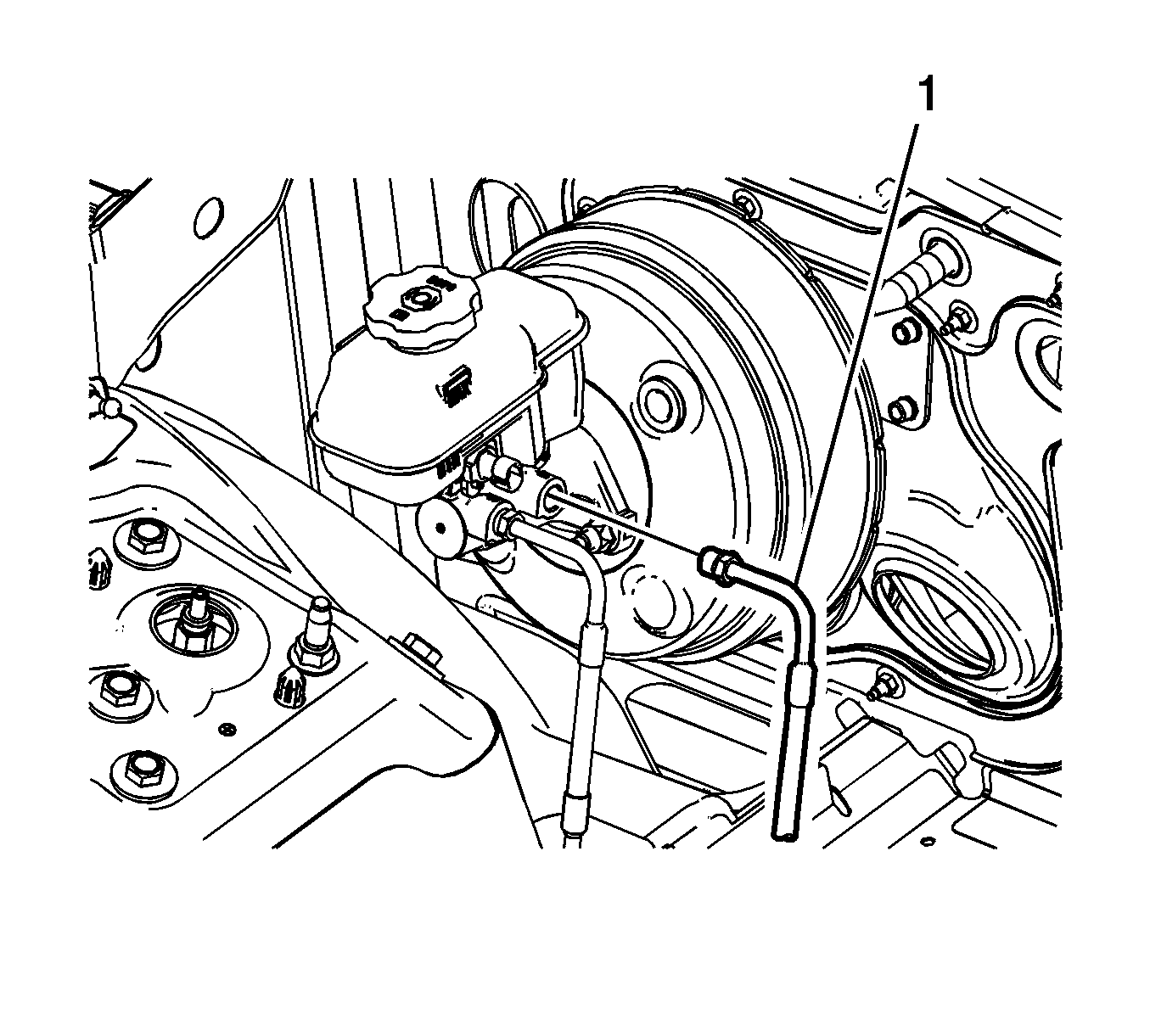
Cap the brake pipe fitting and plug the master cylinder outlet port to prevent brake fluid loss and contamination.
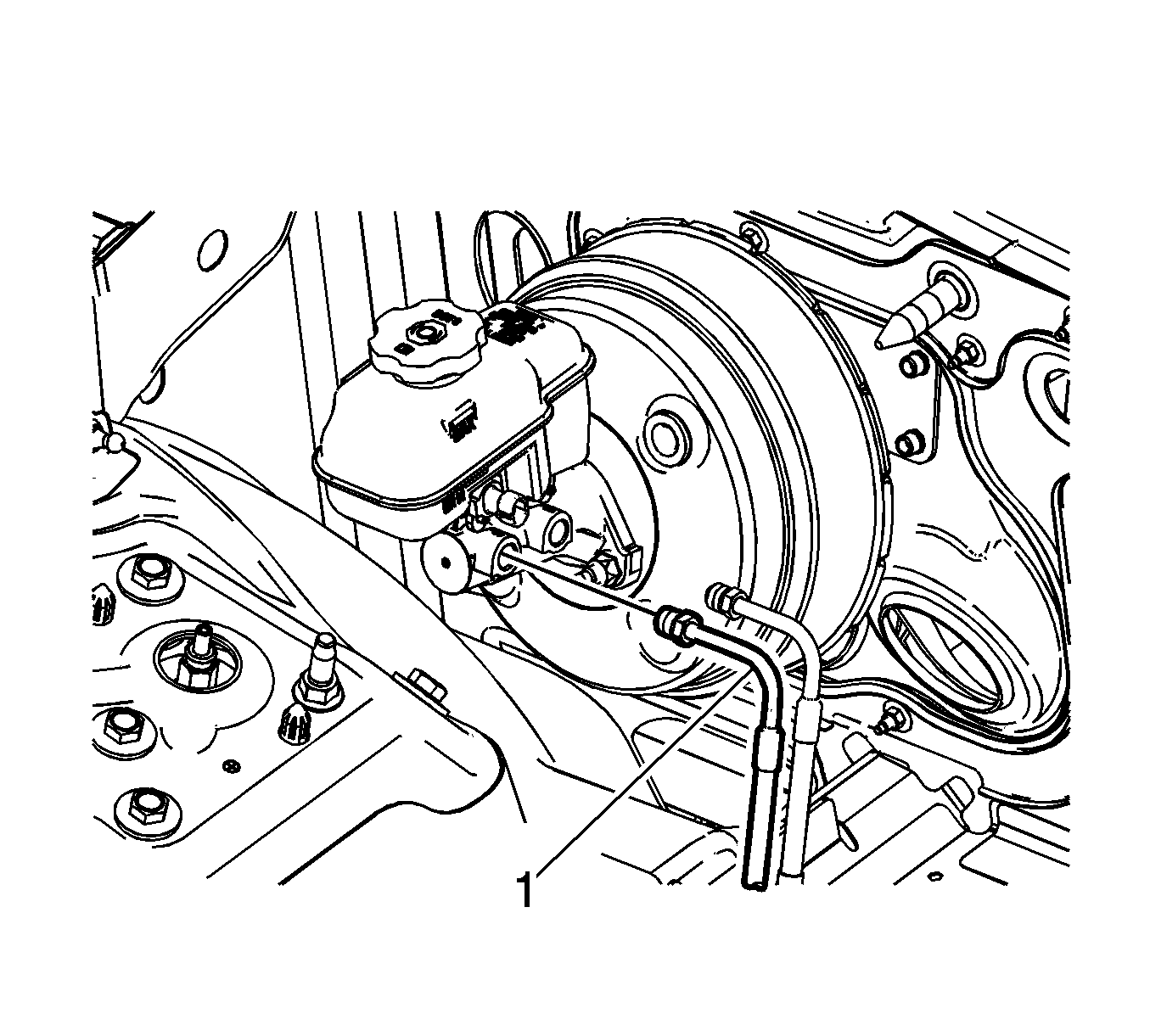
Cap the brake pipe fitting and plug the master cylinder outlet port to prevent brake fluid loss and contamination.
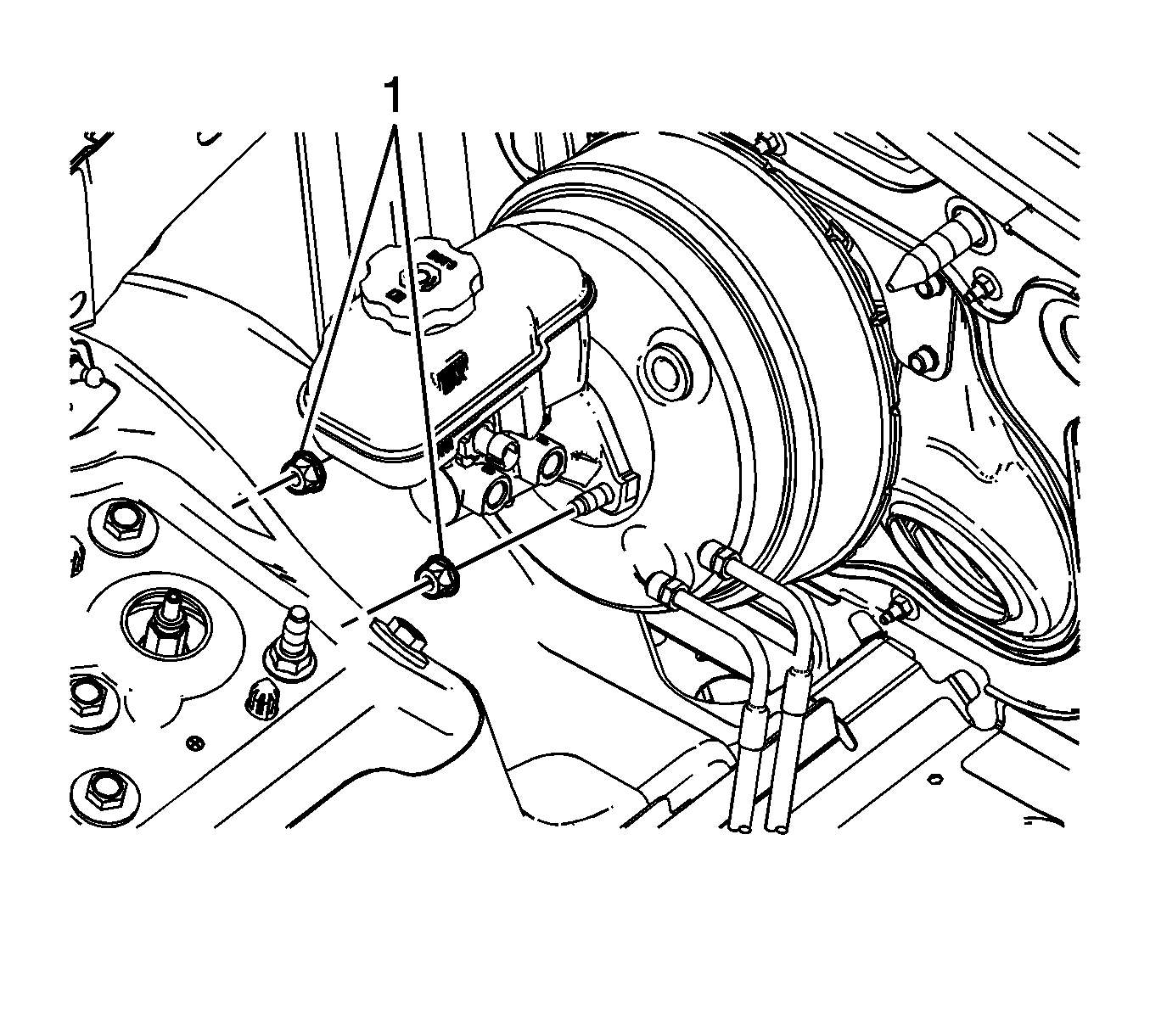

Installation Procedure
- Position the master cylinder to power vacuum brake booster seal to the master cylinder body.
- If installing a new master cylinder, bench bleed the master cylinder. Refer to Master Cylinder Bench Bleeding.
- Install the master cylinder (1) to the power vacuum brake booster.
- Install the master cylinder nuts (1) and tighten to 25 N·m (18 lb ft).
- Connect the master cylinder secondary brake pipe fitting (1) and tighten the fitting to 36 N·m (27 lb ft).
- Connect the master cylinder primary brake pipe fitting (1) and tighten the fitting to 36 N·m (27 lb ft).
- Connect the brake fluid level indicator switch electrical connector.
- Bleed the hydraulic brake system. Refer to Hydraulic Brake System Bleeding.
Ensure the seal is positioned properly and is not deformed.

Caution: Refer to Fastener Caution in the Preface section.



